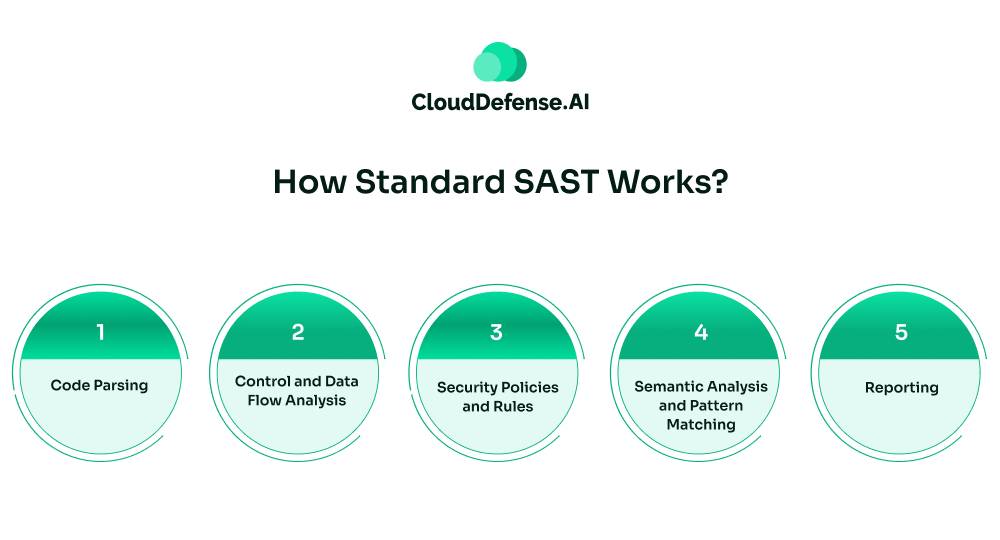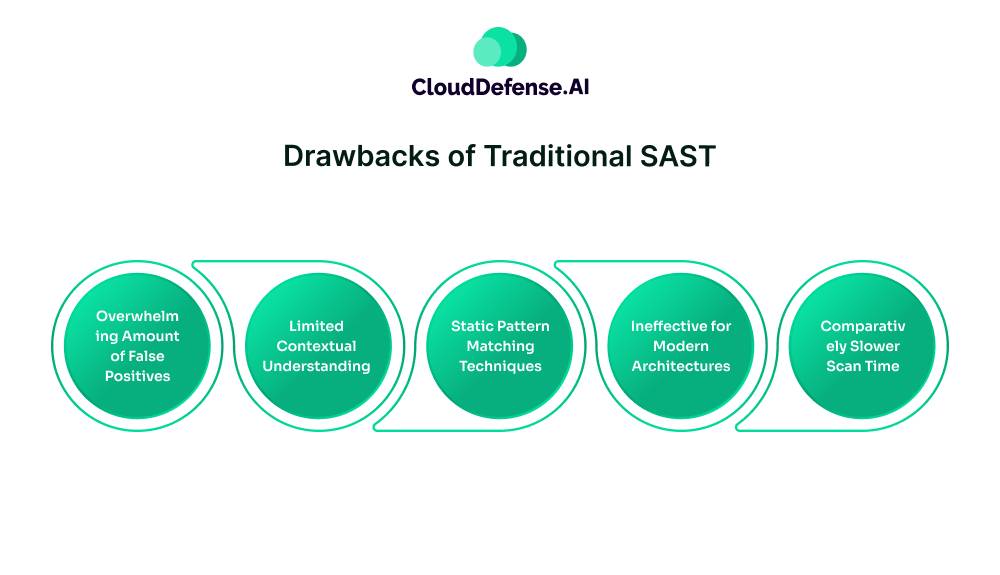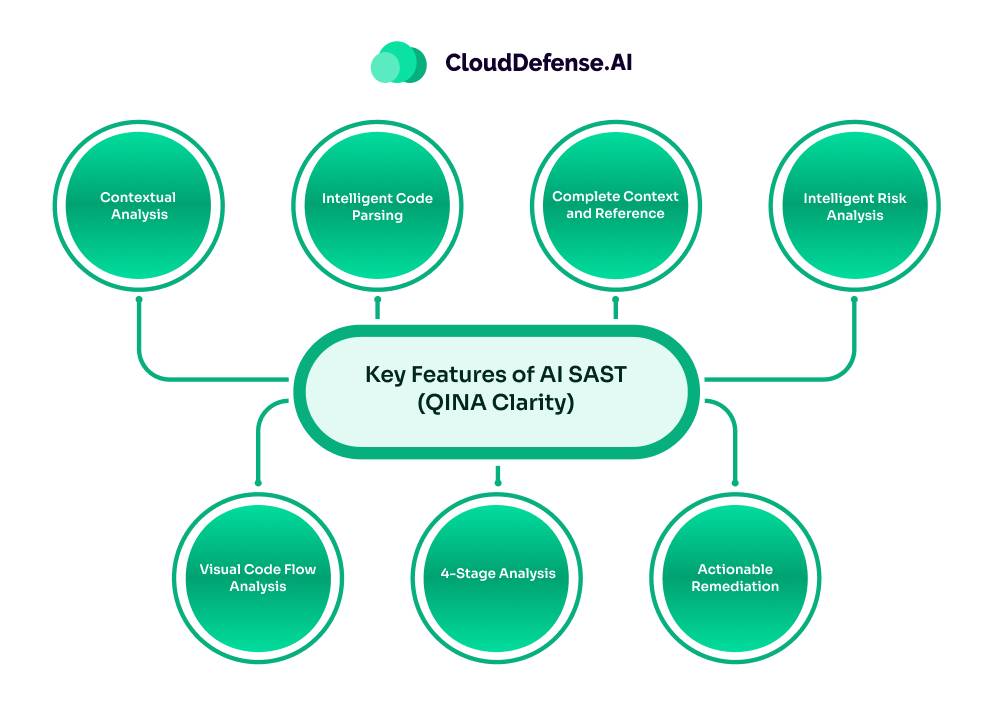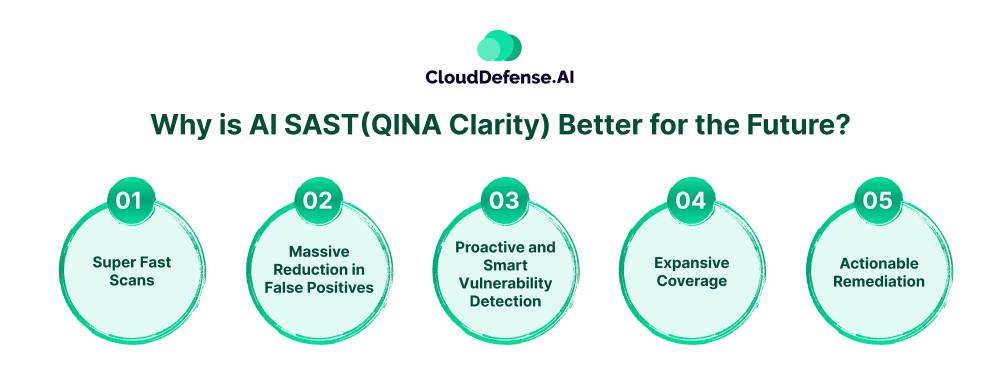For the last several years, traditional SAST has been one of the primary pillars of the modern software development environment. It employs a white-box approach to thoroughly scan the application’s source code and identify any vulnerabilities.
However, with evolving cyberthreats, fast-paced development, and increasing complexity in codebases, traditional SAST is finding it difficult to offer the best results. To go beyond these limitations, organisations are shifting to AI SAST tools like QINA Clarity.
These tools are smart, AI-based, and leverage context-aware vulnerability detection to revolutionise how organization protect their codebase. In this article, we are going deep into Traditional SAST vs AI SAST comparisons and understand why the next generation SAST tools like QINA Clarity are a necessity for organizations.
Understanding Traditional SAST
Static application security testing is a standard testing methodology that has been used by organisations to assess source code and discover vulnerabilities. It is based on a white box testing method that scans the source code, binary, or bytecode before they are compiled in the SLDC.
During analysis, it not only performs deep analysis on the code structure but also analyzes the data flow and control flow. This vulnerability detection technique operates with predefined patterns, rules, and signatures, ensuring all the known vulnerabilities will be identified.
By identifying vulnerabilities in the early stage, SAST enables developers to remediate the issue and maintain a secure software development environment. It helps developers in detecting XSS, SQL injection flaws, buffer overflows, and other weaknesses included in OWASP or SANS.
How Standard SAST Works?

At the core, SAST works by integrating into the CI/CD pipeline and analysing the application source code or binaries to identify any critical vulnerabilities. It catches a variety of vulnerabilities in the early stage of SDLC, helping developers to eliminate all security threats before deployment.
The SAST workflow involves:
- Stage 1-Code Parsing: SAST begins its work by parsing the source code of the application to create an Abstract Syntax Tree(AST). The parsing helps the tool in understanding the code’s structure and other various components like functions, variables, and loops.
- Stage 2-Control and Data Flow Analysis: In the next stage, SAST performs control and data flow analysis to learn about the application’s behavior. The control flow analysis helps in understanding the execution paths through the code. Whereas data flow analysis helps in tracking the data movement through the app. This analysis is important in identifying insecure data handling and XSS vulnerabilities.
- Stage 3- Security Policies and Rules: SAST also involves a set of predefined security policies and rules for assessing the source to uncover any vulnerabilities. These policies and rules are based on various industry standards like CEW Top 25 and OWASP Top 10. Organizations often tweak the policies and rules to align with the organization’s policies and security goals.
- Stage 4-Semantic Analysis and Pattern Matching: Every SAST tool utilizes semantic analysis and pattern matching techniques on code components and compares them against predefined patterns, security rules, and policies. It helps in uncovering all the hardcoded secrets or vulnerable libraries.
- Stage 5- Reporting: At the end of the workflow, SAST tools create reports and alerts regarding all the potential vulnerabilities.
Drawbacks of Traditional SAST

Traditional SAST is the foundation of modern DevSecOps, but it has several drawbacks that make it ineffective in modern application development. The limitations it faces are:
- Overwhelming Amount of False Positives: The major drawback of traditional SAST in Traditional SAST vs AI SAST comparison is the high false positive rates. Since it lacks contextual understanding of the code structure and data flow, it often flags code that is not an actual threat. It not only causes alert fatigue but also causes developers to lose trust in the tool.
- Limited Contextual Understanding: When organizations utilise SAST tools like GitHub Actions SAST and GitLab CI SAST, they lack AI support to understand the logic of the code. Due to generic assumptions and misinterpretation of configurations, it often flags harmless code.
- Static Pattern Matching Techniques: SAST tools are limited to predefined rules, policies, and pattern matching techniques. As a result, it can’t detect any unknown threats or zero day attacks, which are a necessity in modern times.
- Ineffective for Modern Architectures: Modern application development environment utilizes APIs, libraries, and other third-party components. In many cases, it is unable to identify threats originating from third-party comments, scripts, or API. The complexity of modern architectures limits their identification capability.
- Comparatively Slower Scan Time: Although SAST scans have a decent scan time but in comparison to next generation SAST, they are slower. It doesn’t scan the code changes; instead, it scans the entire codebase, bottlenecking the CI/CD pipeline.
The Next Generation AI SAST: QINA Clarity
AI SAST is the next generation SAST tool that enables developers to move beyond rule-based analysis to an intelligent and smart vulnerability detection approach. QINA Clarity AI is the leading AI SAST tool that leverages AI, ML, and LLM models to accurately identify vulnerabilities and zero-day attacks.
It understands the code’s context, behavior, and security logic to provide a more actionable report. This next-gen SAST tool holds the ability to quickly scan code and provide real-time feedback in the IDE.
QINA Clarity AI moves beyond standard security findings prioritisation. It takes an intelligent 4-stage analysis where it filters out all false positives and provides developers with prioritised alerts with complete context and security tags.
Key Features of AI SAST(QINA Clarity)

QINA Clarity AI is an AI SAST tool that enables organizations to intelligently identify security threats. However, in AI SAST comparison, what sets this tool apart is its key features:
- Contextual Analysis: QINA Clarity AI utilizes AI and ML-assisted static analysis that scans code along with its dependencies to identify complex and subtle vulnerabilities. It goes beyond standard pattern match, where it understands the code’s context, business logic, and intent before providing an alert.
- Intelligent Code Parsing: Next generation SAST like QINA Clarity utilizes AI and LLMs that are trained on millions of lines of code in different languages and frameworks. It enables the tool to adapt to any complex tech stack and understand the code structure.
- Complete Context and Reference: QINA Clarity AI provides feedback regarding identified vulnerabilities directly to developers by CI/CD integration. It provides complex vulnerability reports with accurate technology tags and security references.
- Intelligent Risk Analysis: In the Traditional SAST vs AI SAST comparison, QINA Clarity AI gets the edge with a clear and simple explanation of risk analysis. It performs intelligent scanning that involves dataflow/taint analysis and reachability analysis to provide reports about exploitability and business impact.
- Visual Code Flow Analysis: This intelligent AI SAST tool makes it easier for developers to understand how flawed code might be executed. It showcases a complete interactive and visual code flow that highlights how a user input reaches the vulnerable execution point.
- 4-Stage Analysis: QINA Clarity AI leverages an intelligent 4-stage analysis that transforms massive security findings into actionable security insight. The security findings go through four stages: dead code detection, context extraction, LLM analysis, and smart prioritization. It provides feedback directly to developers regarding which alerts are must-fix and false positives.
- Actionable Remediation: By leveraging LLM models, Clarity provides actionable remediation feedback directly within pull requests. It provides developers with easy and guided code remediation along with a clear explanation.
Head-to-Head Comparison: Traditional SAST vs AI SAST (QINA Clarity)
Here is a complete head-to-head comparison between Traditional SAST vs AI SAST with QINA Clarity AI being the next generation SAST:
| Feature | AI SAST (QINA Clarity) | Traditional SAST |
| Code Analysis Methodology | Intelligent code analysis with AI and LLMs for contextual and data flow assessment. | Relies on rule-based and predefined pattern matching analysis. |
| Alert Prioritization | Smart prioritisation through 4-stage intelligent security finding analysis. | Prioritizes alert of standard severity rating through databases like CVSS. |
| False Positive Rate | Significantly lower false positives in context to Traditional SAST vs AI SAST comparison. | Has high false positives which goes up to 75%. |
| Scan Speed | Fast and contextual scanning. It mainly targets code changes and completes the scanning in 2 minutes. | Slow scan speed especially for complex codebases. |
| Remediation Process | Context-aware, real-time and guide remediation process with option for automation. | Provides generic remediation suggestions. |
| Vulnerability Coverage | It identifies both known and unknown cyber threats including zero-day attacks and business flaws. | Covers only known cyber threats that are available in databases. |
| Developer Experience | Offers CI/CD integrations with real-time feedback and PR-native. | The lengthy reports, long scans and high false positives ruins developers’ experiences. |
| Dependency Scan | Proactively scans all the code dependencies including libraries, packages and API. | Covers only a partial segment of the dependencies. |
| Visual Analysis | Provides complete visual code flow analysis with vulnerability mapping. | Offers a limited analysis coverage in context to Traditional SAST vs AI SAST comparison.. |
| Contextual Understanding | Offers deeper understanding for code architecture, path, business and runtime. | The lack of AI support leads to limited understanding of code flow and architecture. |
Why is AI SAST(QINA Clarity) Better for the Future?

In the Traditional SAST vs AI SAST comparison, traditional SAST offers the foundation and groundwork for application security. However, it is lagging behind in today’s high-speed application development.
AI SAST tools like QINA Clarity AI offer a massive leap forward as they benefit modern organizations with:
- Super Fast Scans: QINA Clarity AI is the future when it comes to Traditional SAST vs AI SAST comparison. It holds the ability to intelligently scan for newly added code or modified code segments, along with their dependencies, within 2 minutes. The incremental scanning, along with the IDE code scanning, ensures short feedback loops.
- Massive Reduction in False Positives: Being a next-generation SAST, it understands the code’s context and logic. Importantly, it offers smart prioritizations of security findings through a 4-stage analysis, reducing false positives by 40%.
- Proactive and Smart Vulnerability Detection: Through CI/CD integration, QINA Clarity AI performs proactive vulnerability detection to detect issues before the code is committed. It leverages AI and LLMs to identify novel and complex vulnerabilities that can’t be detected by traditional SAST.
- Expansive Coverage: AI SAST tools like QINA Clarity AI not only analyze the source code but also perform a deep assessment of the entire software supply chain. It leverages advanced identification techniques to offer a holistic view of all the risks associated with the APIs and third-party packages.
- Actionable Remediation: Another aspect that makes QINA Clarity AI superior is the step-by-step remediation guidance it offers directly into the IDE. It often helps developers to automate the remediation process for similar risks. It also provides visual code flow analysis to help developers remediate issues faster.
Conclusion
Both SAST and AI SAST tools(QINA Clarity) serve as a key aspect in modern application security. However, when it comes to Traditional SAST vs AI SAST, next generation SAST tools like QINA Clarity AI outshine traditional approaches. Although SAST provides the foundation, QINA Clarity represents the next revolution for the application development environment.
It has revolutionised how organizations secure code and enabled developers to be proactive with security tasks. It streamlines most security tasks through automation, allowing organizations to build secure applications at high velocity.







